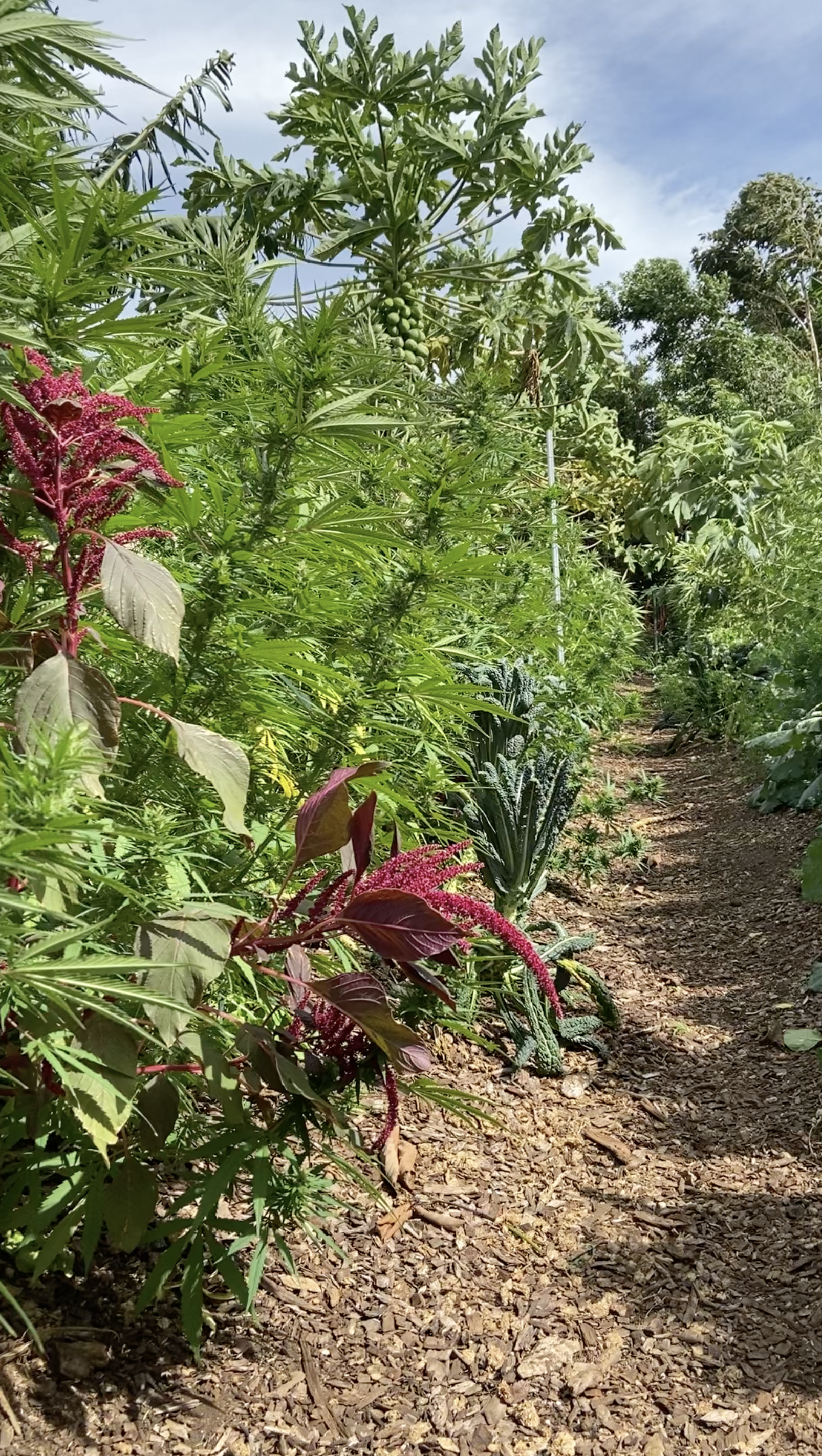
Agroforestry and vertical regenerative farming to provide dappled shade to crops underneath, maximizing production per square foot, while creating diverse microorganism habitat, which maximizes plant health and minimizes water needs, etc. Coconut, banana, moringa, and papaya are the tree crops shading kale, tatsoi, basil, flax, arugula, etc. Nani Kai Hoku Farm is certified organic.








